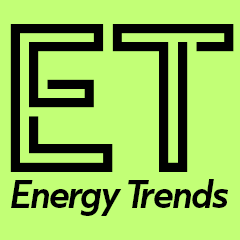
Surging investment in the manufacturing of clean energy technologies, especially solar photovoltaics (PV) and batteries, became a driver of global economic growth, creating new industrial and employment opportunities, according to the new report of the Paris-based International Energy Agency (IEA).
This unique analysis, titled Advancing Clean Technology Manufacturing (ACTM), reported that global investment in the manufacturing of five key clean energy technologies (solar PV, wind, batteries, electrolysers and heat pumps) increased to 200 billion US dollars in 2023, more than 70 per cent rise from the year before that accounted for around 4 per cent of global GDP growth.
Manufacturing investments in solar PV more than doubled in 2023, while spending on battery manufacturing rose to more than 150 per cent of the 2022 volume. As a result, solar PV module manufacturing capacity today already reached the level that is needed in 2030 to meet the IEA’s net zero emissions scenario. Battery cell manufacturing capacity stands at 90 per cent of the target towards meeting net zero demand at the end of this decade, if announced investment projects are included.
The ACTM report found that several of these investment projects in the pipeline will be operational soon: circa 40 per cent of the 2023 investments in clean energy manufacturing were in facilities that are due to come online in 2024, while the same share in battery cell investments topped at 70 per cent.
As the Executive Director of IEA, Fatih Birol explained, record production in solar panels and battery plants was propelling clean energy transitions.
“Strong investment in new facilities and factory expansions is set to add further momentum in the years ahead,” confirmed Mr Birol, adding that “greater investment is still needed for some technologies. (…) Clean energy manufacturing could be spread more widely around the globe, but the direction is clear.”
Clean energy manufacturing is still dominated by China, the EU and the US. China is currently home to more than 80 per cent of global solar panel manufacturing capacity. However, the ACTM report found that battery manufacturing could become less geographically concentrated by 2030. If all announced investment projects were to be realised, both the EU and the US could reach around 15 per cent of global installed capacity by the end of this decade.
China remains, however, the lowest-cost producer of all clean energy technologies, based on new data and analysis of plant-level assessments in more than 750 facilities. Battery, wind and solar panel manufacturing facilities are typically 20 to 30 per cent more expensive to build in India than in China and cost 70 to 130 per cent more in the US and the EU.
Nevertheless, after a challenging 2022, the early signs from 2023 annual financial reports released to date suggest that several European OEMs may have turned a corner, with new manufacturing announcements also in the CEE region. For example, in early 2024, Danish wind turbine manufacturer Vestas broke ground on a new factory for manufacturing blades for the company’s flagship offshore wind turbines and a hub assembly in Szczecin, Poland, expected to be operational in 2025.


